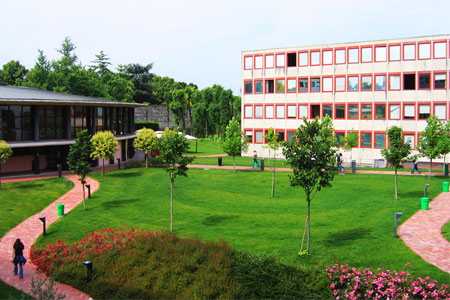Learning outcomes
This course provides the elements students need to understand the relationship between writing and the figurative apparatus, including book ornamentation, and to be able to assess the aesthetic, communicative and didactic functions of book illustration. It begins with the consideration of the book as an “artistic” product with its own formal and stylistic features. To this end looking to the past, even the remote past, serves as a premise for approaching the book with greater awareness and understanding how its design and production have evolved in contemporary communicative media (video, computer-based, digital etc.). In other words, the educational objectives are to provide a historical background combining forms of continuity and technological innovations, aesthetics and communication, that will be useful for students interested in pursuing a career and making choices in the field of publishing. The course focuses on and brings together three fundamental elements. The first concerns the aesthetics of font and typesetting, that is, the “architectural organism” considered in terms of its rule-bound formal aspects, while contemporary examples are approached as instances of experimental and provocative “breaks” with tradition. To this end, the course briefly addresses the main stages in the emergence of the alphabets of ancient civilizations up to the formation of Roman writing, the foundation of the classical tradition of all subsequent printing activities including contemporary examples. There will also be institutional references to the significance of writing and the image in relation to texts in ancient civilizations, including those outside of Europe and especially in connection with their religions and symbolic or sacred values. The second element regards the procedures used to create figurative designs and illustrations, for example illumination, woodblock and intaglio in their various forms (direct and indirect, involving the graver and etching with its multiple variations) leading up to the most modern industrial systems of reproduction, beginning with lithography and going on to cover the ensuing evolution of industrial printing. The course also addresses the terminology used in the various European languages. The third element involves a diachronic investigation of the history of illustrated books from the birth of the printing press to the modern and contemporary ages, making note of the typological features which, albeit through changing styles and techniques, have persisted over time. The study of this latter element will involve considering the structural nature of the code and the relationship between the field of writing and the field of the image from late antiquity through the main junctures of the Middle Ages, such as the Romanesque and Gothic periods. Pedagogically speaking, students will be guided in learning the stylistic and evaluative method of analysis applied to illustrated books. The same method is used in the course on modern art history and this is another reason why the latter course should be considered preliminary. In the classroom, students will be engaged in discussion following a seminar-style approach in order to aid them in acquiring the appropriate analytical vocabulary. Approaching the history of illustration using the methods of art history requires locating the key figures of the art of printing and illustration within the geography and history of Italian and European culture. Due to the brief duration of the course, it will not be possible to hold classes at libraries or temporary exhibitions. Instead, students will be provided with more in-depth information during class sessions, particularly as concerns the main stages of the history of illustration, including contemporary illustration. At any rate, students will be permitted to choose these arguments according to their own interests. On the basis of the specialized literature presented in class, students will have to choose an exam topic for which they demonstrate having assimilated the methodological guidelines provided throughout the course.
* Introduction
1. Illustration and decoration. Terminology and meanings. Decorum and decoration in classic and modern aesthetics.
2. The birth of writing. First media and first historical evidence.
3. Roman writing.
4. From rotolo to codice.
5.-6. The miniature technique. First miniature codex, exemplifications of the relationship between text and image.
7. Civilization, religious books and illustrations: Judaism, Islam etc.
8. Codex with illustrations: geographic areas.
The Church of Rome and the role of the image. The spread of Christianity, Benedictine order and the production of illustrated codex. The Church of Byzantium and the civilization of the illustrated codex, the iconoclasm and its theological assumptions. Palestine, Syria and Christian Africa. Insular culture and civilization of illustrated codex.
9. Periodization and miniature history in the Middle Ages.
The Carolingian and Ottoman civilization. The Romanesque, the Gothic. The Italian Gothic miniatures. Late Gothic in Europe and in Italy.
10.-11. The humanist codex with illustrations. The invention of the press and the first illustrated books in Germany and Italy, literary genres and image roles. Incunabuli illustrated with particular regard to Roman proto-typists and trade situation in Venice up to Aldo Manuzio.
12. Theory. Reading and commentary of the Iubilatio. Alberti, Feliciano Feliciano, Mantegna and the littera mantiniana, Damiano da Moille, Luca Pacioli, De Divina proportione.
13.-14. The woodcut. The great protagonists of the xylographic technique. Schongauer, Dürer, Luca of Leida, Titian, Ugo da Carpi.
15. Calcografia, charateristics of direct engraving. Bulino, puntasecca, maniera nera. Pollaiolo, Mantegna, Raimondi.
16. Intaglio printing, engraving and etching. Acquaforte, acquatinta, ceramolle, lavis. Parmigianino, Barocci, Callot; Cort, Carracci.
17. The title page: origins and evolution. Functions and figurative typologies.
18. Key moments of the typographical font in the 16th century, Manuzio and his legacy. The protagonists in Italy and Europe.
19. Fundamentals of illustrated publishing in the 16th century.
20. Main artists in Italy and Europe (16th century).
21. Fundamentals of illustrated publishing in the 17th century.
22. Rembrandt.
23. Fundamentals of illustrated publishing in the 18th century.
24. Piranesi. Tecnique, genres, international trade.
25. Main artists in Europe (18th century). Bodoni and Neoclassicism. Typographic manuals.
26. Litography and serigraphy.
27. Innovations in printing techniques and illustrated publishing.
The birth of photography and illustration, technical evolutions, new reproductive possibilities, new editorial lines.
28. Industrialization of the font in the 19th century.
29. Manifesto, birth and diffusion in Italy, in Europe and America.
30. The birth of children’s book. The comic.
31. Movimenti and avant-garde.
Morris and Arts and Crafts, Art Nouveau, Liberty, Secession, Expressionism.
Cubism, Futurism, Dada, Russian avant-garde. Bauhaus and modern design.
Pop art. Trends and protagonists in the 20th century.
32.-33. 20th century in Italy: Ratta and Bertieri; Scuola del Libro di Urbino; State Illustration. The book of art in the 20th century.
** Conclusions and new perspectives. From calam to press, from computer to digital. The figure of the graphic and editorial curator today.
Bibliography
Handouts available at the copy shop ‘Replay’. This compendium indicates the exact bibliography students need to study for the examination; for specific information about the texts contained therein, students should consult the Italian version of the program. Students are also advised to study certain concepts (ex. illustration, decoration, ornamentation) and authors mentioned in these texts (ex. Pollaiolo and Mantegna - graphic works - Schongauer, Dürer, Luca di Leida, Raimondi, Ugo da Carpi, Rembrandt, Piranesi, Bodoni) in more depth and detail by drawing on encyclopedia entries or art history manuals.
In relation to the situation deriving from the Coronavirus emergency, the examination modality shown below is modified for the 2020 summer session, in accordance with the indications of the university, in oral exam with telematic mode [ZOOM].
Written exam with five open-ended questions (4 hours long). There is also a short essay question on a topic chosen from among those listed in the Italian version of the program. These topics refer to some of the additional information provided in lectures. Other topics selected by the student to be studied in more depth must be agreed-on before the written exam. The student will be able to attach the essay question to the written exam during the examination itself. In any case, students are required to present a short abstract they have written.
Furthermore, you can download on the web page some images (even with comments) previously analyzed in lessons. During the exam, recognition, typological and stylistic comment of these images are required.







